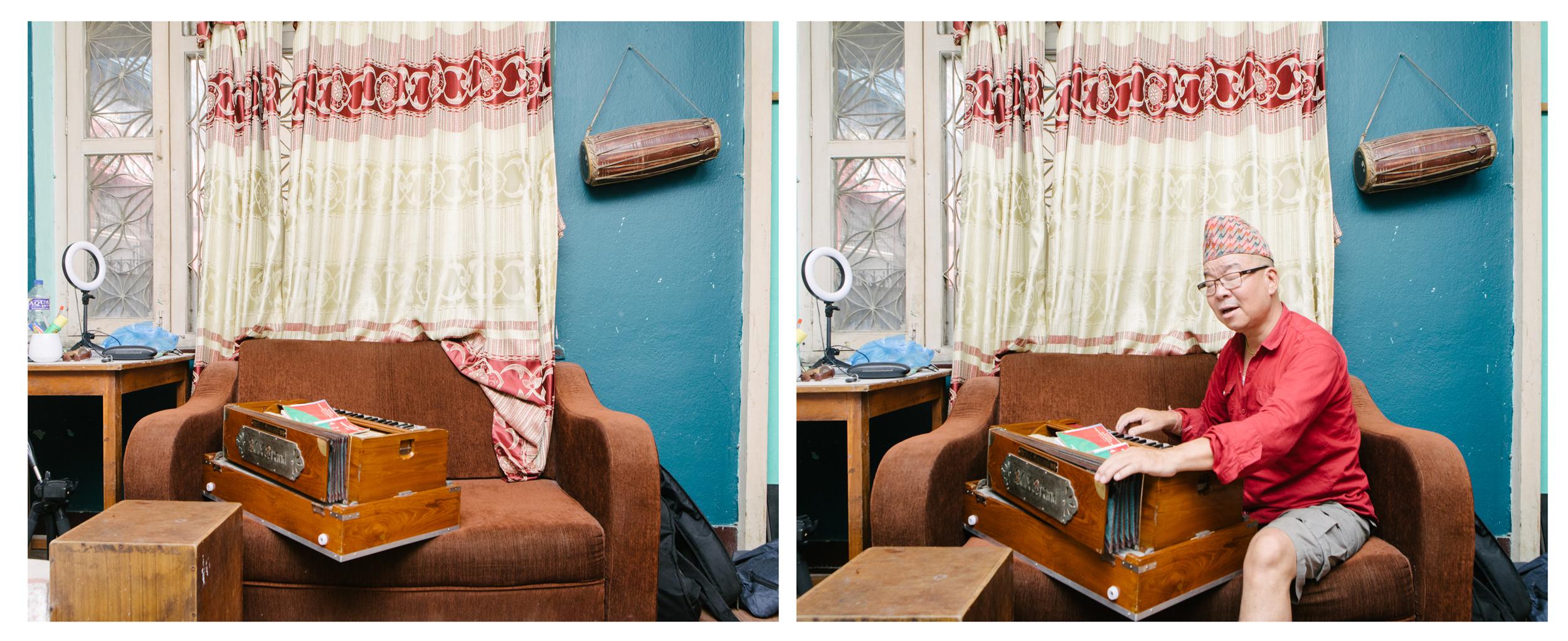Moonsongs for Earth: Musical Imaginaries of Revolution
What are the cultural remnants of war?
Prasiit Sthapit’s ongoing documentary series Moonsongs for Earth (2022–) chronicles the histories and legacies of music in the midst of the ten-year-long war in Nepal between the erstwhile constitutional monarchic government and the Communist Party of Nepal (Maoist). From 1996 to 2006, the country was marked by intense violence, resulting in over 17,000 deaths and 1,300 unresolved disappearances. Reports of frequent bombing and rising casualties became commonplace as clashes between the state and the Maoist-led People’s Liberation Army (PLA), or the Nepal Police, which implemented guerrilla tactics, loomed large.
On the heels of a people’s movement that led to the drafting of a constitution in the country, the Maoists relied on cultural production—including music—to disseminate their political ideas and to assimilate support and unity amongst the masses. “For the Maoists,” Sthapit states in his artist note, “music emerged as a powerful tool during the war, serving not only as propaganda but also as battle cries and catharsis.” Songs filled with powerful words of blood and bullets, anger and fury, were suffused with imaginaries of a land of blooming flowers, of warm smiles and the embrace of the people, uniting in love and life. The melding of poetry and melody as a necessary cultural artefact of wartime became a refuge for the people’s revolutionary dreams.
With the end of the war, the Maoist Party entered mainstream politics as Nepal underwent a transition from a constitutional monarchy to a democracy. As the country navigated a fraught political environment, the musicians drifted away from the idealistic vision of Nepal into the everyday disillusionment of party politics, corruption and the seizure of power. The cultural memory of the war faded into the recesses as Nepal recovered from the war, amidst geopolitical tensions with its neighbouring countries, a devastating earthquake and a global pandemic.
In an interview with Muna Gurung for Aperture, Sthapit explained how he wanted to complicate the stereotypical images associated with the war by focusing instead on the musicians. “There was the PLA, who carried guns and bombs, and then there were musicians, who carried guitars and harmoniums,” he states, adding, “We had seen plenty of war images in the media, but I wanted to see the war through the eyes of the musicians…These intimate musical sessions, too, were part of the war. These musicians held and spread the dream of the revolution through their songs.” Moonsongs for Earth, most recently exhibited at the Photoville festival in New York, is a musical documentation of the war and its aftermath, its recent and recessive memories, and a dedication to the musicians’ persistent dreams for an egalitarian vision of Nepal. The ongoing work combines archival images, research and documentation of the musicians by Sthapit. This album is a selection of images from the series.
Watch a video of Laxmi Gurung singing as a part of the work-in-progress documentary by Sthapit.
To learn more about Prasiit Sthapit’s previous work, read Santasil Mallik’s two-part conversation with the artist.
All images are from the series Moonsongs for Earth (2022–) by Prasiit Sthapit. All Images and captions courtesy of the artist, unless stated otherwise.
Click on the image to view the album





